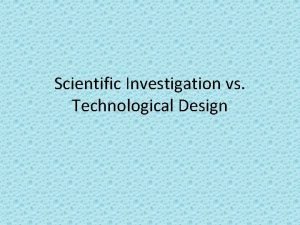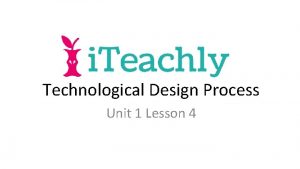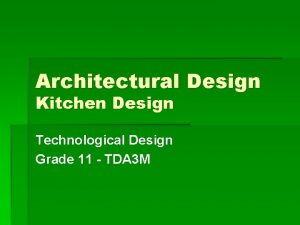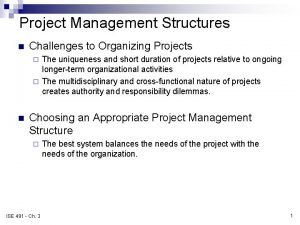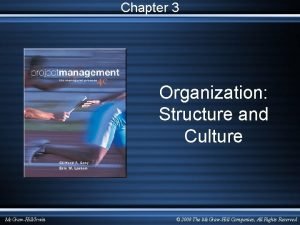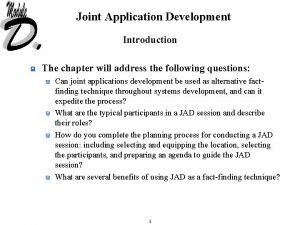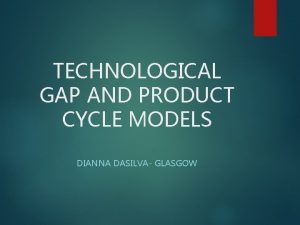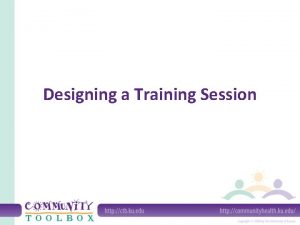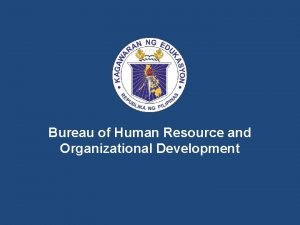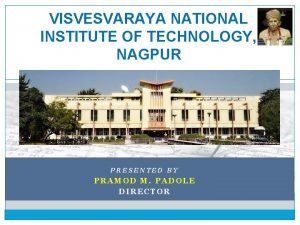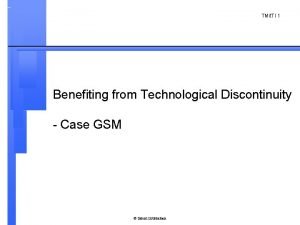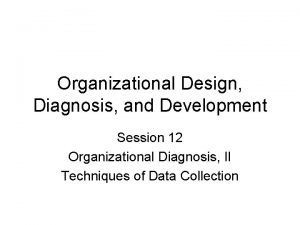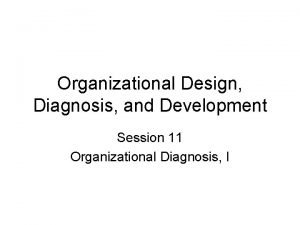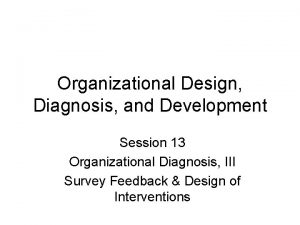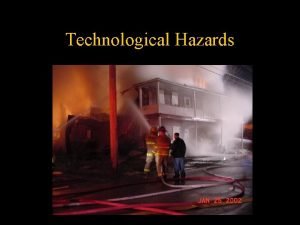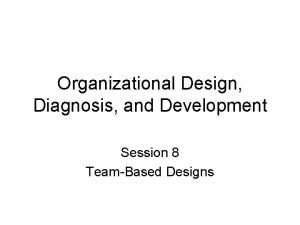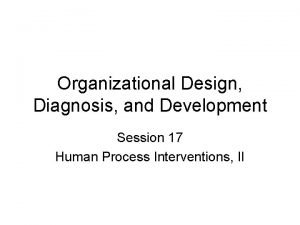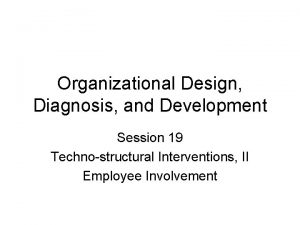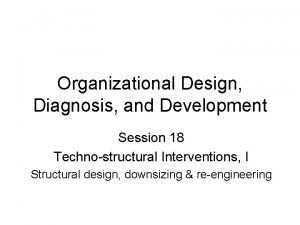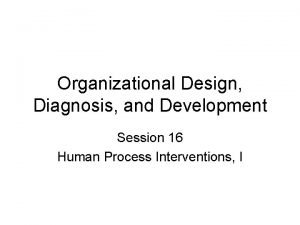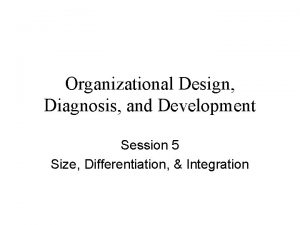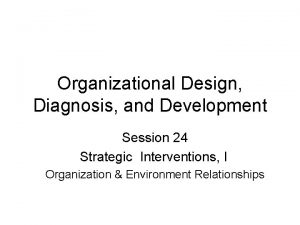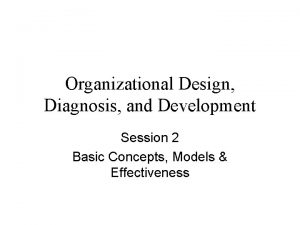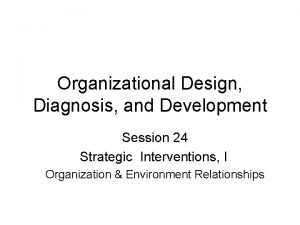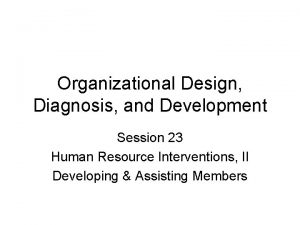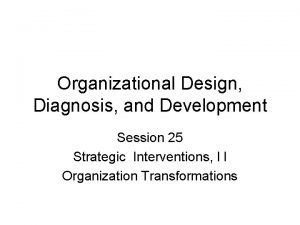Organizational Design Diagnosis and Development Session 4 Technological

















- Slides: 17

Organizational Design, Diagnosis, and Development Session 4 Technological considerations

Objectives • To review traditional concepts of technology • To understand the relationship between technology and structure • To examine contemporary concepts of technology and their relationship to structure • To understand the role of technology in the process of organizational design

Traditional Concepts of Technology • South Essex studies - Joan Woodward • Task typologies - Charles Perrow • Task interdependencies - James Thompson

South Essex Studies • 100 manufacturing firms in South Essex • Data collected on: – Objectives of firm & background – Manufacturing processes – Organizational structures & processes – Organizational effectiveness (market share, profitability, general reputation, labor turnover, etc. )

Modal Technology Types • Unit: Production is designed to meet individual customer requirements. (Custom tailor, prototype equipment) • Mass: Standardized production on an intermittent basis, such as an assembly line or large batch like a bakery. • Process: production on a continuous flow such as a chemical plant, oil refinery.

Overall Findings • Technological imperative: Structure varied with technology type. Woodward came to believe technology determined structure • Mass is more mechanistic • Unit and process are more organic • Hierarchy increases from unit to mass to process

Technical Complexity & Structure for Effective Firms Characteristics High Levels of management Span of control Ratio of managers to personnel Low Unit Mass Process

Technical Complexity & Structure for Effective Firms Characteristics Ratios: 1. direct to indirect labor, 2. Manual to administrative staff, 3. Wages & salaries to total cost Labor costs High Low Unit Mass Process

Technical Complexity & Structure for Effective Firms Characteristics Span of supervisor control Separation of administration from operation Written communication Control & sanction procedures Specialization between line & staff High Low Unit Mass Process

Technical Complexity & Structure for Effective Firms Characteristics High Verbal communication Role ambiguity for jobs Organizational flexibility Skilled workers Low Unit Mass Process

Perrow’s Types of Technology Exceptions Problems Technological Type Few Easy to analyze Routine technology Difficult to analyze Craft technology Many Easy to analyze Engineering technology Difficult to analyze Non-routine technology

Thompson’s Types of Technology Type Task Interdependence Integration Mediating Pooled (banks) Standardization Long-linked Sequential (assembly line) Hierarchy of Authority Intensive Reciprocal (hospital) Mutual Adjustment

Advanced Information Technology • The accumulation, storage, processing and transmission of data made possible by computers

Advanced Information Technology • Advanced Manufacturing Technology – Computer Aided Design and Manufacturing – Computer Integrated Manufacturing • Office Technology – Word processing – Communication (e-mail, fax) – Data bases, spreadsheets – Information storage and retrieval

Impact of Automation on Job Design • Manufacturing – Less skill on the shop floor – New jobs require skills in programming and electronics – Task lines blur between skill areas • Office technology – Initially some de-skilling – Ability to develop multiple skills in applications

Impact of Automation on Organizational Structure • Manufacturing – Flatter, more flexible structures – Increased need for coordination – Functional structures may be counterproductive • Office Technology – Flatter – Decentralized

Backwards & Forwards • Summing up: Today’s session considered both traditional views of the impact of technology on design (Woodward’s technological imperative, Perrow’s routineness of task and Thompson’s interdependencies) and contemporary views derived from Advanced Manufacturing Technology and Office Technology. • Looking ahead: Next time we begin our exploration organizational differentiation, integration, & size
 Nursing process steps
Nursing process steps Medical diagnosis and nursing diagnosis difference
Medical diagnosis and nursing diagnosis difference Types of nursing diagnosis
Types of nursing diagnosis Nursing process objectives
Nursing process objectives Technological design and scientific investigation
Technological design and scientific investigation Perbedaan diagnosis gizi dan diagnosis medis
Perbedaan diagnosis gizi dan diagnosis medis Technological design loop
Technological design loop Which is one limitation to technological design
Which is one limitation to technological design Technological design grade 11
Technological design grade 11 Organizational culture diagnosis worksheet
Organizational culture diagnosis worksheet Chapter 3 organization structure and culture
Chapter 3 organization structure and culture How do you conduct a jad session
How do you conduct a jad session Technological gap and product cycle model
Technological gap and product cycle model Training session design
Training session design Microsoft architecture design session
Microsoft architecture design session Bhrod ppst-rpms
Bhrod ppst-rpms Visvesvaraya technological university nagpur
Visvesvaraya technological university nagpur Technological discontinuity definition
Technological discontinuity definition




